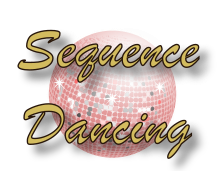

6
12
18
24
a
23
56
89
122
b
4
16
64
256
c
33
-66
132
-264
d
31
28
31
30
e
How did you use this starter? Can you suggest
how teachers could present or develop this resource? Do you have any comments? It is always useful to receive
feedback and helps make this free resource even more useful for Maths teachers anywhere in the world.
Click here to enter your comments.
Previous Day | This starter is for 31 July | Next Day
Sign in to your Transum subscription account to see the answers
Note to teacher: Doing this activity once with a class helps students develop strategies. It is only when they do this activity a second time that they will have the opportunity to practise those strategies. That is when the learning is consolidated. Click the button above to regenerate another version of this starter from random numbers.
Your access to the majority of the Transum resources continues to be free but you can help support the continued growth of the website by doing your Amazon shopping using the links on this page. Below is an Amazon link. As an Amazon Associate I earn a small amount from qualifying purchases which helps pay for the upkeep of this website.
Educational Technology on Amazon

|
Teacher, do your students have access to computers such as tablets, iPads or Laptops? This page was really designed for projection on a whiteboard but if you really want the students to have access to it here is a concise URL for a version of this page without the comments: Transum.org/go/?Start=July31 However it would be better to assign one of the student interactive activities below. |
|
Here is the URL which will take them to a sequences self marking quiz.
Adapted from Wikipedia:
"Sequence dancing is a form of dance in which a pattern of movements is repeated. Sequence dancing may include dances of many different styles. The term may include ballroom dances which move round the floor as well as line, square and circle dances.
Sequence dancing in general is much older than modern ballroom dances. With the exception of the waltz, invented around 1800, all dances in ballrooms were sequence dances until the early 20th century. After modern ballroom dancing developed, in England, sequence dancing continued. It included so-called 'Old Time' dances and also adapted versions of the new ballroom dances, and then versions of Latin dances. Sequence dancing is a competitive sport as well as a social pastime."
See the National Curriculum page for links to related online activities and resources.